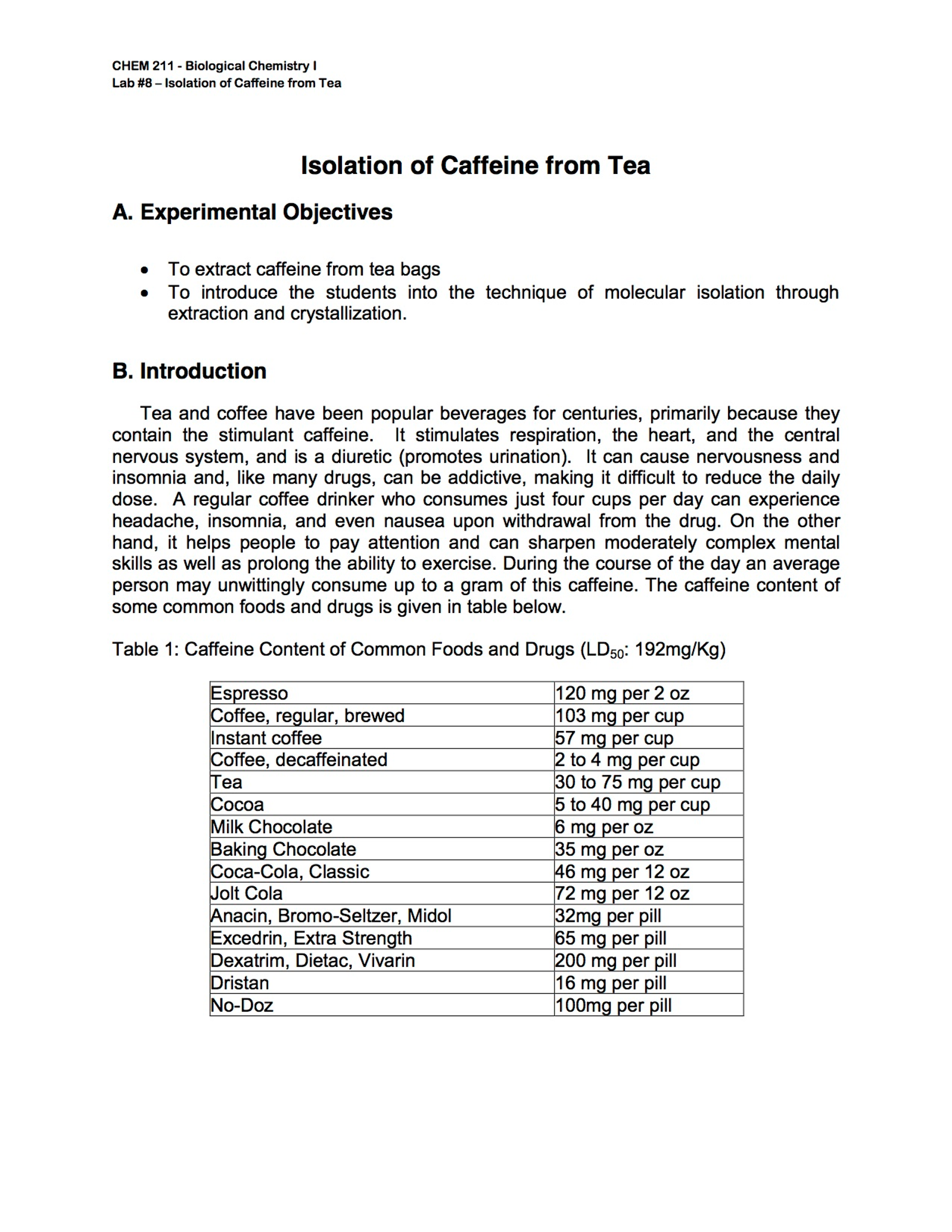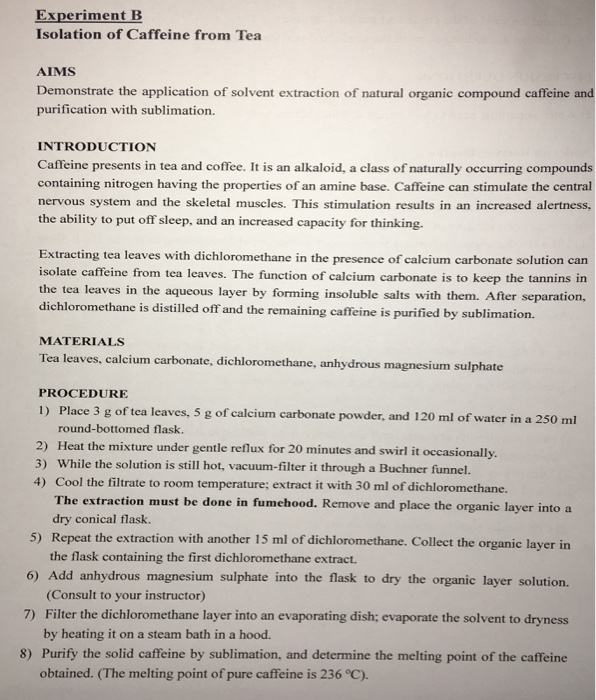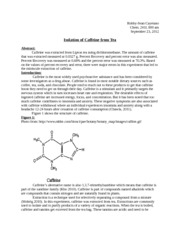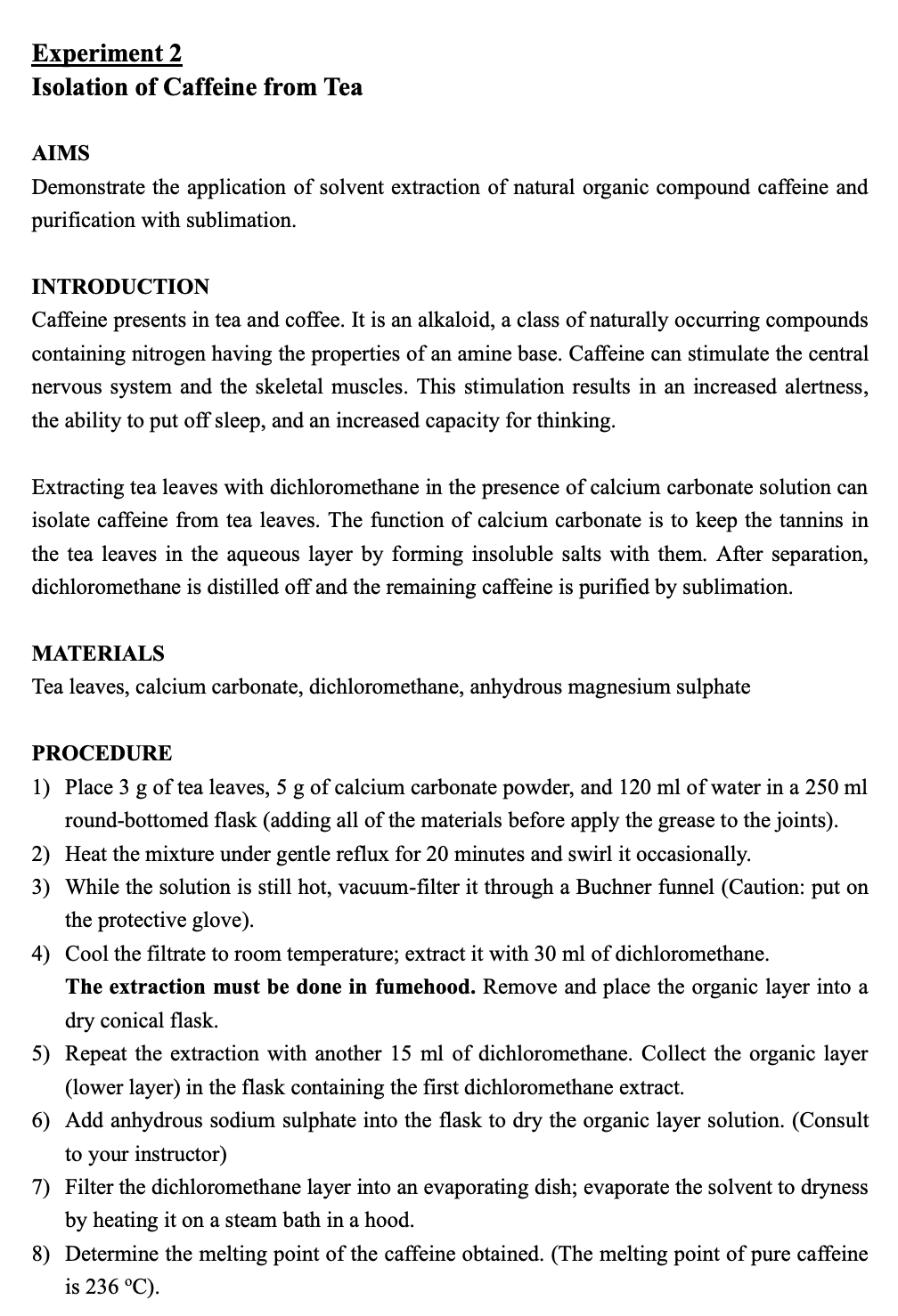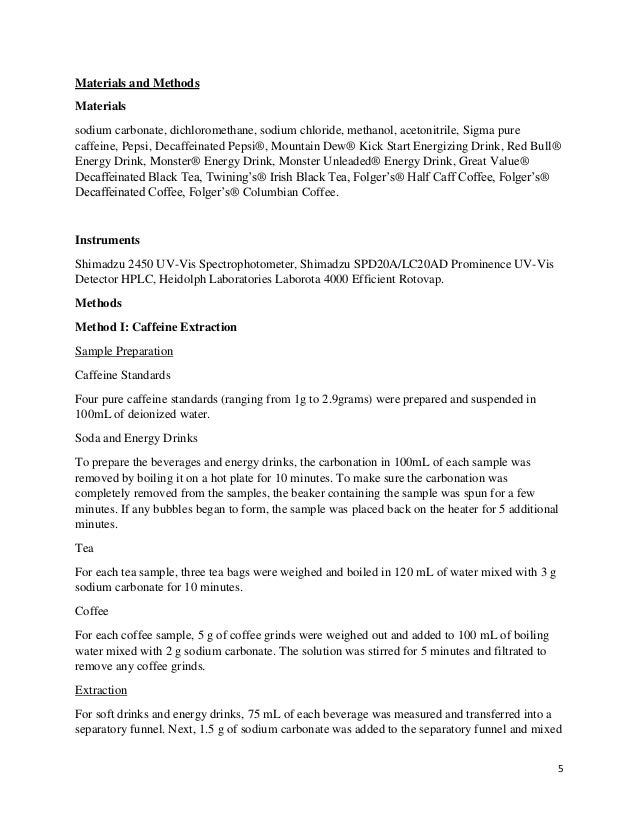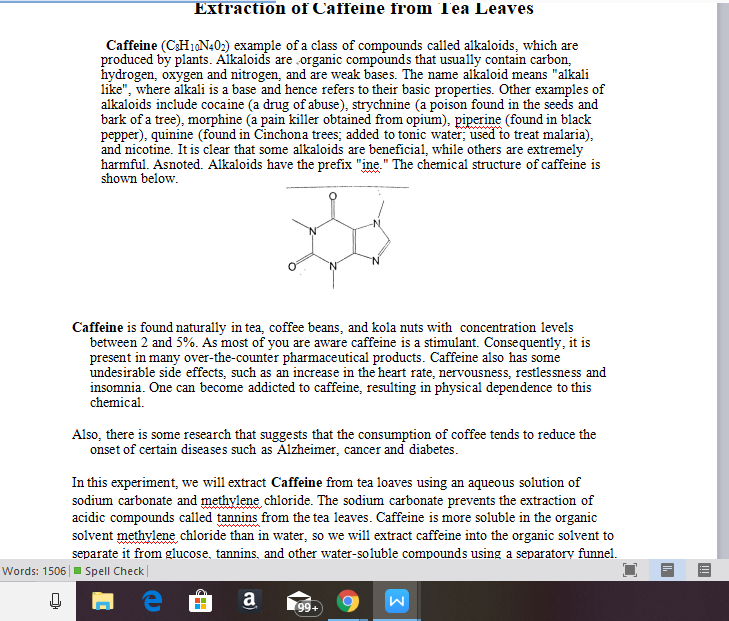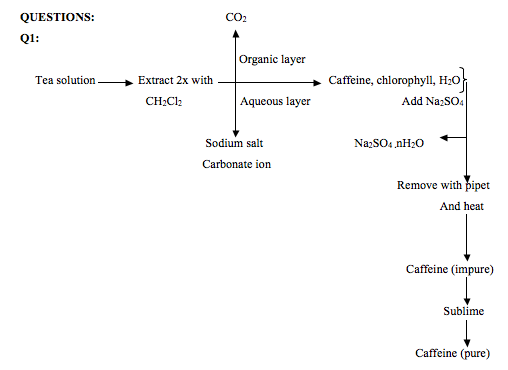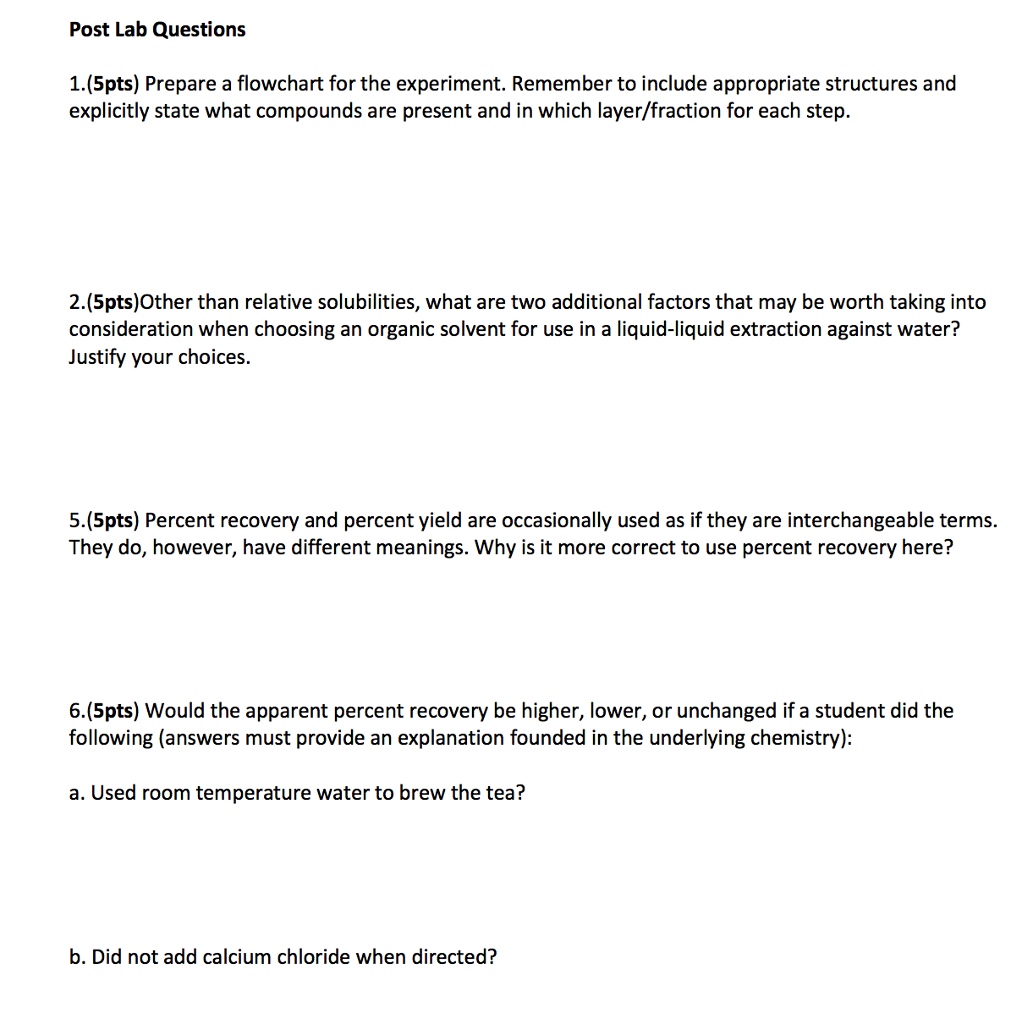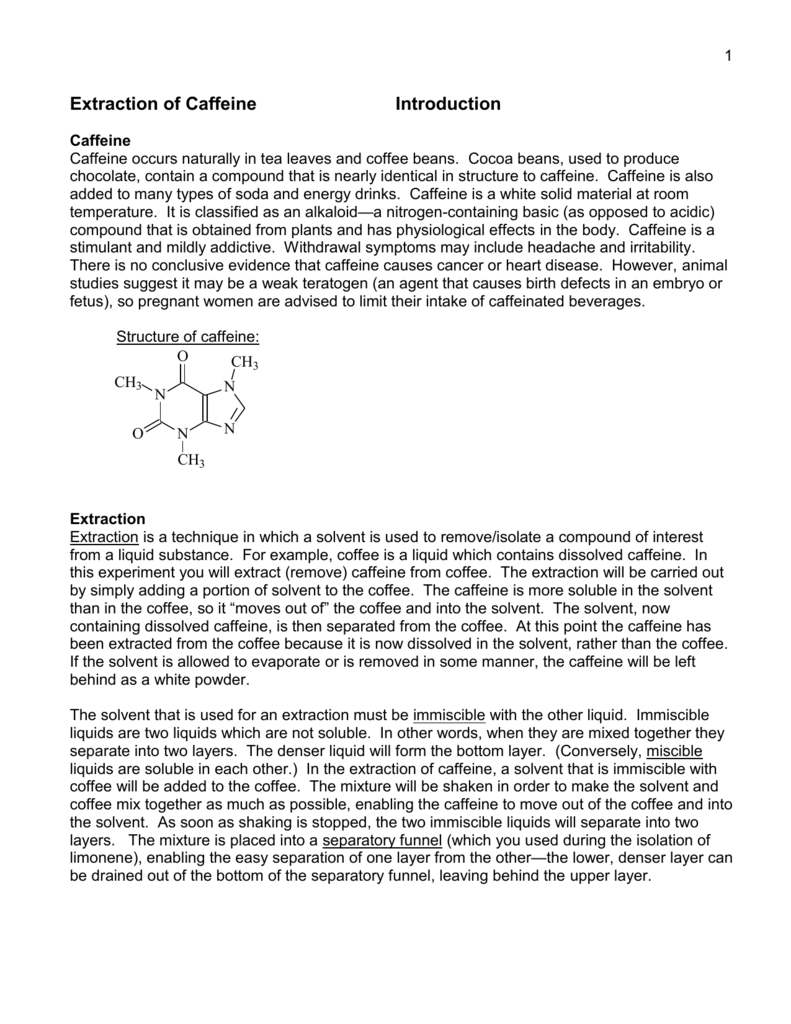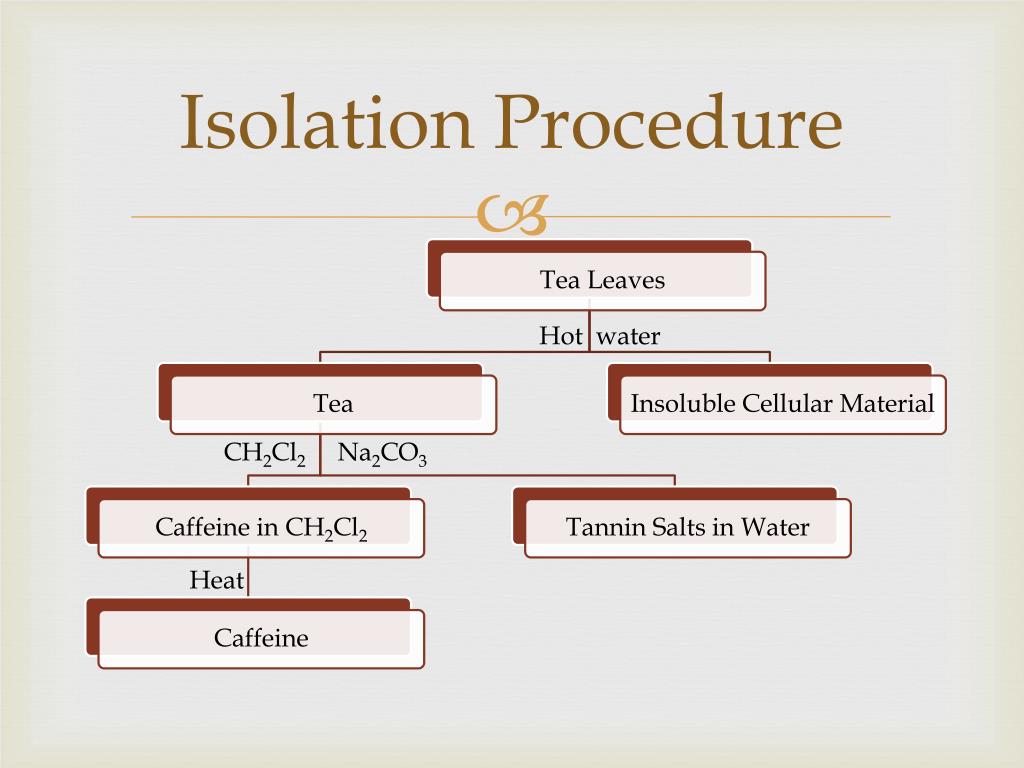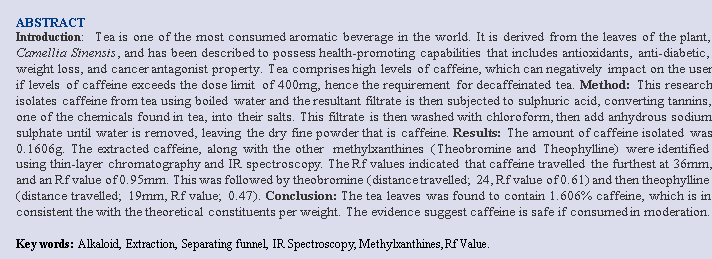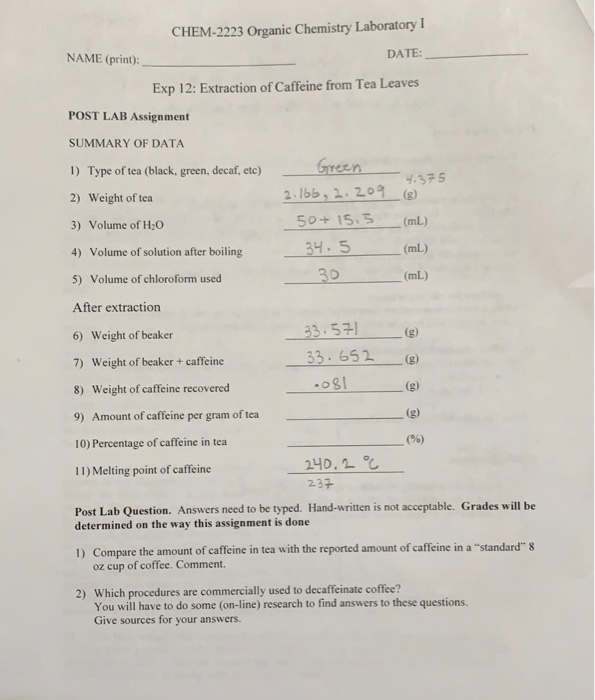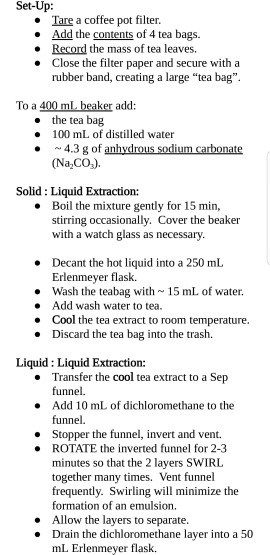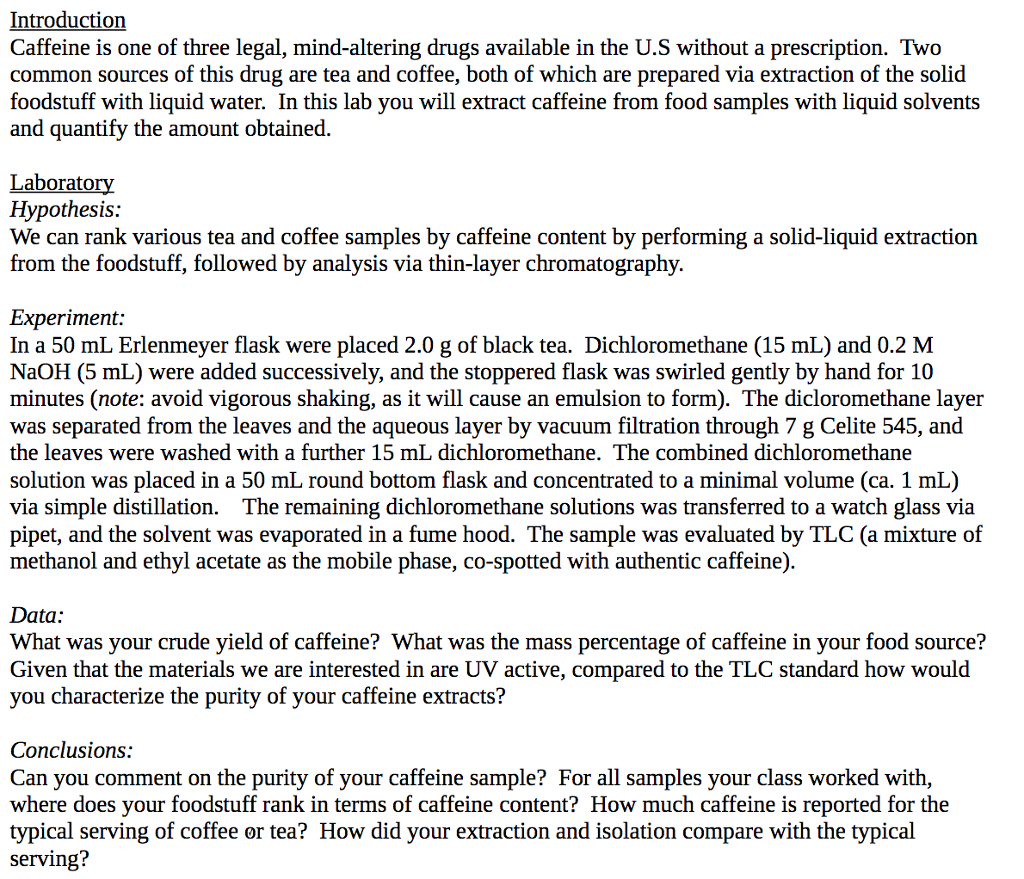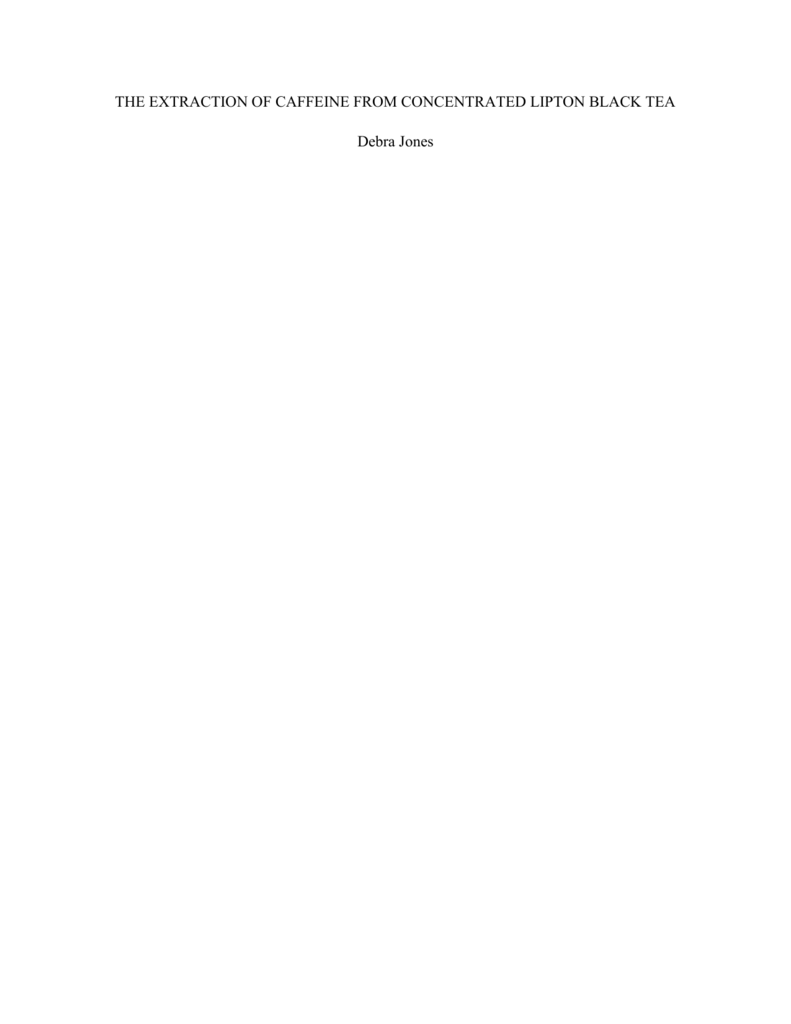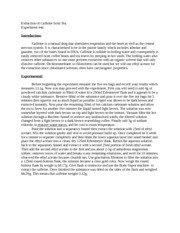Isolation Of Caffeine From Tea Or Coffee Lab Report
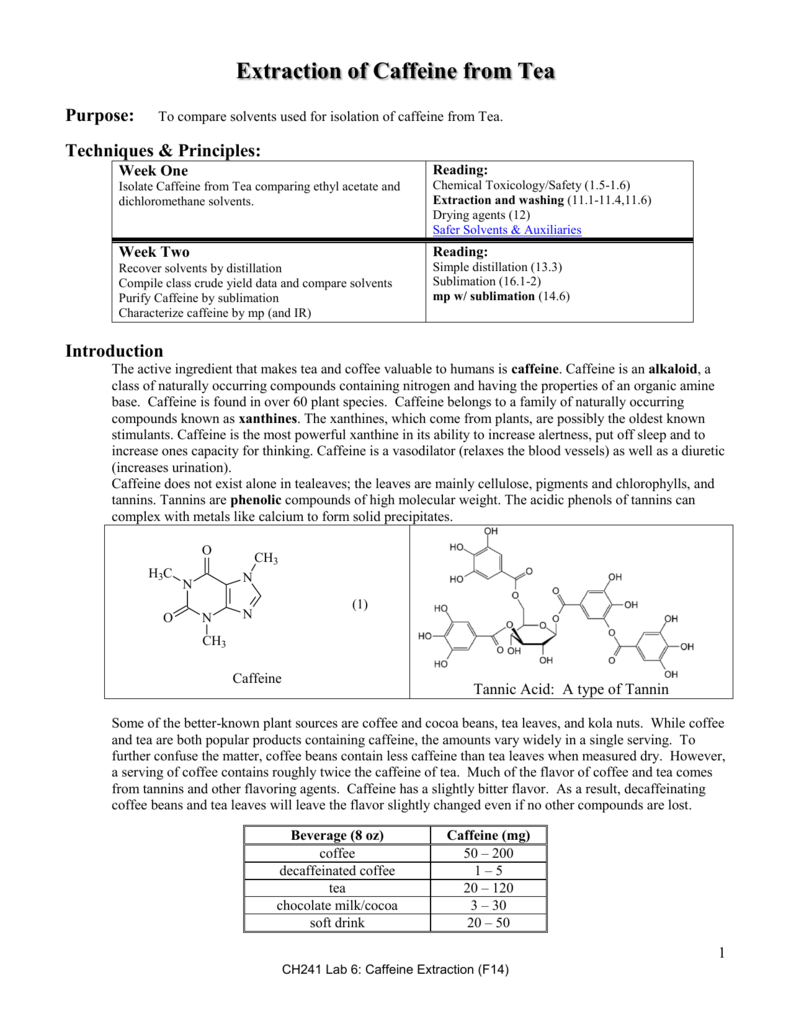
In order to do so the above mentioned acidic substances must remain water soluble.
Isolation of caffeine from tea or coffee lab report. This is essentially the same procedure used to decaffeinate drinks such as coffee and tea. Caffeine lab 1 isolation of caffeine from tea in this experiment caffeine will be extracted from tea leaves where it is about 5 present using hot water. In order to extract caffeine from tea several methods are used. The solvents used in the experiment were an aqueous sodium carbonate and dichloromethane dcm.
First a solid liquid extraction must take place in order to get the solid natural product into the liquid solvent. Ten commercial tea bags 23 06 grams were used for the extraction. In commercial application caffeine supplements pharmaceuticals and certain beverages such as coffee or tea. 25 g and the final extraction without the impurities to be.
Caffeine from tea leaves caffeine must be present as the free base amrita 2013. Dew energy drink 19 98 red bull 24 01 monster energy 25 46 monster energy unleaded 7 82 great value black tea decaf 1 83 irish black tea 29 29 half calf 14 27 columbian coffee 22 11 decaffeinated coffee 4 12 method ii. Camellia sinensis tea caffeine. Isolation of caffeine from tea leaves by.
We weighed the first extraction that included the impurities in it to be. Hplc discussion due to time constraints no further attempts were made to obtain a useable chromatograph from hplc. Caffeine is an alkaloid stimulant with a cyclic backbone structure analogous to the purine structures of dna giving it the ability to affect biochemical pathways in the body 1. Che 223 lab report ysatis m fenner title extraction isolation of caffeine from coffee preformed october 1st 2018 submitted october 15th 2018 abstract caffeine.
Procedure add about 10 0 g of tea leaves to around 100 ml of water in a 400 ml beaker cut open. Isolation of caffeine section 12 02 nattanit trakullapphan nam narissara pracharktam nik thaksaporn sirichanyaphong may abstract. 3 g resulting in a low percent yield of 12. Caffeine can be extracted from tea by its ability to be better dissolved in dichloromethane than water.
Analysis isolation of caffeine this experiment was conducted to study the simple isolation of an alkaloid and to train with fundamental laboratory equipment like the separatory funnel and distillation apparatus. Caffeine extraction coffee physical extraction anacin decaffeination. The purpose of this experiment was to perform a liquid liquid extraction method to extract the caffeine from the tea bags that were provided and then recrystallize the caffeine. Coffee originated in china and this was the sole producer until the british empire colonized india and began.

